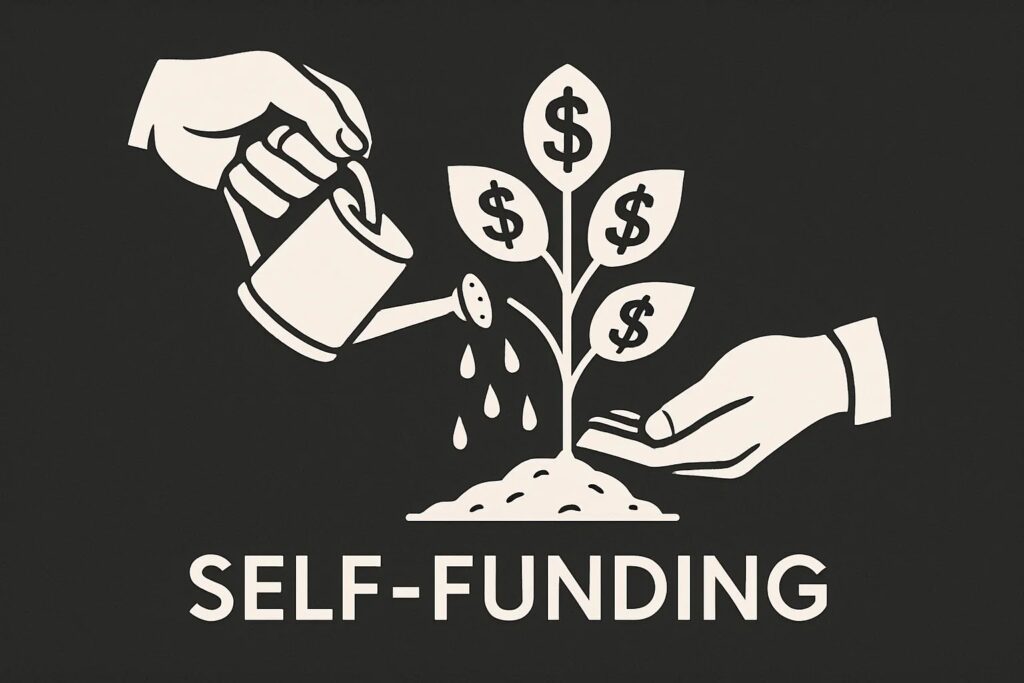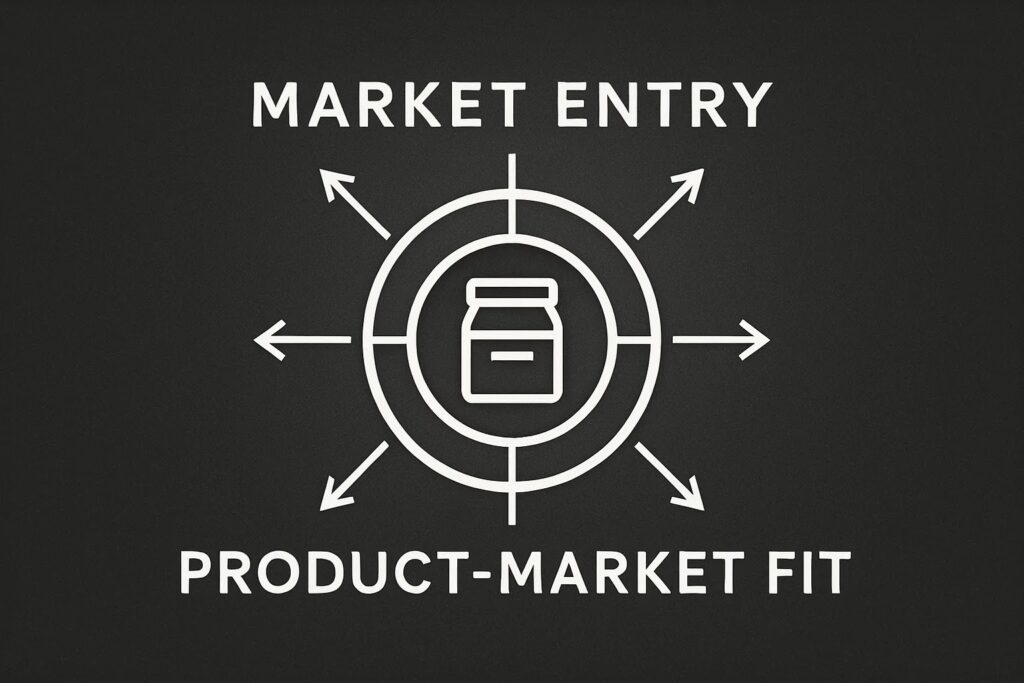Startup Funding Stages: The Ultimate Guide
Startup funding represents the lifeblood of entrepreneurial ventures, providing the necessary capital to transform innovative ideas into sustainable businesses. Each funding stage serves a distinct purpose in a company’s growth trajectory, with specific investor expectations, valuation methodologies, and operational requirements.
The funding ecosystem operates through systematic stages, each characterized by unique risk profiles and return expectations. Early-stage investors typically accept higher risk in exchange for larger equity stakes, while later-stage participants focus on proven business models with predictable revenue streams.
Market research data confirms that successful startups progress through multiple funding rounds, with average time intervals of 18-24 months between major raises. This progression reflects the company’s evolution from concept validation to market expansion and eventual exit preparation.
Why Startups Need Capital
Capital requirements stem from fundamental business necessities that cannot be addressed through organic revenue generation alone. Product development, market penetration, and operational scaling demand significant upfront investments before generating sustainable cash flows.
Within the framework of financial modeling, startups face the “valley of death” – a critical period where expenses exceed revenue. External funding bridges this gap, enabling companies to reach profitability without compromising growth velocity or competitive positioning.
Key capital allocation areas include:
- Product research and development
- Customer acquisition and marketing
- Talent recruitment and retention
- Technology infrastructure and equipment
- Working capital and operational expenses
- Market expansion and geographic scaling
Bootstrapping: The First Stage

Bootstrapping represents self-funded growth using personal savings, revenue reinvestment, and minimal external capital. This approach maintains maximum founder control while establishing proof-of-concept and initial market traction.
Successful bootstrapping requires disciplined financial management and creative resource utilization. Founders leverage personal networks, barter arrangements, and revenue-generating activities to minimize cash requirements while building core business functionality.
Market conditions heavily influence bootstrapping viability. B2B software companies often bootstrap more effectively than hardware manufacturers due to lower capital intensity and faster revenue generation potential.
Bootstrapping Metrics
Performance measurement during bootstrapping focuses on efficiency and sustainability rather than growth velocity. Key metrics include customer acquisition cost relative to lifetime value, monthly recurring revenue growth, and burn rate management.
Financial discipline becomes paramount, with detailed tracking of:
| Metric | Target Range | Purpose |
| Monthly Burn Rate | <$5,000 | Cash preservation |
| Customer Acquisition Cost | <30% of LTV | Sustainable growth |
| Revenue Growth Rate | 15-30% monthly |
Market validation |
| Gross Margin | >70% | Unit economics |
Valuations
Bootstrapped company valuations rely on revenue multiples and market comparables rather than venture capital methodologies. Pre-revenue ventures often use asset-based or cost approaches, while revenue-generating businesses employ market-based multiples.
Depending on market conditions, bootstrapped SaaS companies typically achieve 3-8x annual recurring revenue valuations, significantly lower than venture-backed competitors but sufficient for founder liquidity or strategic partnerships.
Real-World Bootstrapping
Mailchimp exemplifies successful bootstrapping, growing from a side project to a $12 billion acquisition without external investment. The founders maintained complete control while building a sustainable business model through customer-centric product development and organic growth strategies.
Similarly, Shopify bootstrapped its initial development phase, allowing founders to validate the market opportunity and build core functionality before raising institutional capital. This approach enabled strategic timing of external funding when growth acceleration became necessary.
Pre-Seed Round
Pre-seed funding addresses the earliest capital needs, typically ranging from $50,000 to $500,000. This stage focuses on concept validation, MVP development, and initial team formation before comprehensive market entry.
The primary objective involves proving product-market fit assumptions through minimal viable product development and customer feedback collection. Pre-seed capital enables founders to dedicate full-time attention to business development without immediate revenue pressure.
Strategic use of pre-seed funding includes market research validation, prototype development, and initial customer acquisition. This stage establishes the foundation for subsequent funding rounds through demonstrable progress metrics.
Pre-Seed Requirements
Pre-seed investors evaluate founder quality, market opportunity size, and initial traction indicators. Unlike later stages, financial metrics carry less weight than team capabilities and market positioning.
Essential requirements include:
- Compelling founder backgrounds with relevant experience
- Clear problem identification and proposed solution
- Initial customer validation or user feedback
- Basic financial projections and funding requirements
- Intellectual property protection strategies
Technical founders often advance more readily through pre-seed evaluation due to reduced execution risk and development cost efficiency.
Pre-Seed Investors
You can find pre-seed investors in our vc list.
Pre-Seed Valuations
Pre-seed valuations typically range from $1 million to $5 million, reflecting high risk and limited traction. Valuation methodologies rely heavily on team assessment, market size calculations, and comparable company analysis.
In the presence of hidden risks, investors often structure convertible instruments rather than fixed equity pricing. Simple Agreement for Future Equity (SAFE) notes provide flexibility for both parties while deferring valuation discussions to subsequent rounds.
How to Raise Pre-Seed
Pre-seed fundraising emphasizes storytelling and vision communication over detailed financial projections. Successful raises combine compelling narratives with initial validation evidence and clear capital utilization plans.
The process typically involves:
- Network leverage through warm introductions
- Angel group presentations and pitch competitions
- Online platform submissions (AngelList, EquityZen)
- Accelerator program applications
- Industry conference networking
Preparation requires polished pitch materials, financial models, and legal documentation. Professional legal counsel becomes essential for term negotiation and compliance requirements.
Seed Round

Seed rounds provide substantial capital for market entry and initial scaling, typically ranging from $500,000 to $3 million. This stage enables comprehensive product development, team expansion, and customer acquisition system implementation.
The fundamental objective involves achieving sustainable growth metrics that support Series A fundraising. Seed capital allows startups to transition from validation to execution, building systematic processes for customer acquisition and revenue generation.
Strategic priorities during seed funding include establishing repeatable sales processes, developing core product features, and building foundational team capabilities across key functional areas.
Seed Requirements
Seed investors require demonstrated product-market fit evidence through quantifiable traction metrics. Revenue generation, user growth, and customer retention become critical evaluation criteria alongside team assessment.
Key requirements encompass:
- Proven product-market fit indicators
- Growing user base or customer pipeline
- Defined go-to-market strategy
- Experienced team with complementary skills
- Clear path to Series A readiness
- 18-24 month runway projection
Financial projections gain importance, with detailed models showing customer acquisition costs, lifetime values, and path to profitability scenarios.
Seed Investors
You can find seed investors in our vc list.
Seed Valuations
Seed valuations typically range from $5 million to $15 million, reflecting increased traction and reduced execution risk compared to pre-seed stages. Valuation methodologies incorporate revenue multiples, user metrics, and market opportunity assessments.
SaaS companies with recurring revenue achieve higher valuations than one-time purchase businesses due to predictable cash flow characteristics. Market research data confirms that enterprise-focused startups command premium valuations relative to consumer applications.
How to Raise a Seed Round
Seed fundraising requires comprehensive preparation including detailed financial models, competitive analysis, and growth projections. Successful raises demonstrate clear progress since pre-seed funding and articulate specific capital allocation plans.
The fundraising process involves:
- Lead investor identification and cultivation
- Comprehensive due diligence preparation
- Term sheet negotiation and optimization
- Legal documentation and closing coordination
- Portfolio company integration activities
Professional investment banking or fundraising advisory services often provide valuable support during seed round execution, particularly for first-time founders.
Series A

Series A funding marks the transition to institutional venture capital involvement, typically raising $2 million to $15 million. This stage enables significant market expansion, team scaling, and operational infrastructure development.
The primary purpose involves accelerating proven business models through systematic growth strategies. Series A capital supports customer acquisition scaling, product development acceleration, and market leadership establishment within defined segments.
Revenue generation becomes paramount, with investors expecting clear paths to substantial market capture and eventual profitability. This stage transforms startups from experimental ventures to scaled businesses with institutional governance structures.
Series A Requirements
Series A investors demand comprehensive business validation through substantial revenue growth, customer acquisition efficiency, and market expansion evidence. Due diligence intensifies significantly compared to earlier stages.
Critical requirements include:
- Significant recurring revenue ($1M+ ARR for SaaS)
- Proven unit economics and customer acquisition systems
- Experienced management team with scaling capabilities
- Large addressable market opportunity ($1B+ TAM)
- Competitive differentiation and defensible positioning
- Clear Series B preparation roadmap
Financial metrics undergo rigorous analysis, with particular focus on customer acquisition costs, lifetime values, churn rates, and growth sustainability indicators.
Series A Investors
You can find Series A investors in our vc list.
Series A Valuations
Series A valuations typically range from $10 million to $50 million, reflecting demonstrated market traction and growth potential. Valuation methodologies incorporate revenue multiples, comparable company analysis, and discounted cash flow projections.
High-growth SaaS companies often achieve 10-20x revenue multiples, while marketplace businesses command 5-15x revenue multiples depending on market conditions and competitive dynamics.
Within the framework of financial modeling, investors analyze multiple valuation scenarios including base case, upside case, and downside protection mechanisms through liquidation preferences.
How to Raise Series A
Series A fundraising requires institutional-quality preparation including audited financials, comprehensive business plans, and detailed competitive analysis. The process typically spans 3-6 months from initiation to closing.
Successful Series A execution involves:
- Investment banker or advisor engagement
- Comprehensive data room preparation
- Investor targeting and initial outreach
- Management presentation development
- Due diligence coordination and management
- Term negotiation and documentation
- Closing coordination and post-investment integration
Professional legal and financial advisory support becomes essential given transaction complexity and regulatory requirements.
Series B

Series B funding focuses on market expansion and competitive positioning, typically raising $10 million to $50 million. This stage enables geographic expansion, product line extension, and market share capture initiatives.
The fundamental objective involves scaling proven business models across broader markets while maintaining operational efficiency. Series B capital supports international expansion, acquisition strategies, and infrastructure investments required for substantial growth.
Competitive positioning becomes critical as markets mature and consolidation opportunities emerge. Companies utilize Series B funding to establish market leadership and build defensive moats against competitive threats.
Series B Requirements
Series B investors expect substantial revenue scale, typically $5 million to $20 million in annual recurring revenue for SaaS companies. Operational excellence and management team maturity become primary evaluation criteria.
Essential requirements encompass:
- Significant revenue scale and growth consistency
- Proven management team with enterprise experience
- Strong unit economics and path to profitability
- Market leadership potential within target segments
- International expansion or acquisition opportunities
- Clear competitive advantages and defensible positioning
Financial performance receives intensive scrutiny, with particular emphasis on gross margins, customer concentration, and cash flow generation capabilities.
Series B Investors
You can find Series B investors in our vc list.
Series B Valuations
Series B valuations typically range from $50 million to $200 million, reflecting established market positions and growth trajectories. Valuation methodologies emphasize comparable public company analysis and precedent transaction multiples.
Market research data confirms that Series B valuations correlate strongly with revenue growth rates, with 100%+ growth companies achieving significant valuation premiums over moderate growth counterparts.
How to Raise Series B
Series B fundraising requires institutional investment banking support given transaction size and complexity. The process involves sophisticated investor targeting and comprehensive due diligence preparation.
Key execution elements include:
- Investment banking advisor selection and engagement
- Comprehensive business strategy development
- Financial model refinement and scenario analysis
- Management presentation optimization
- Investor syndication and process management
- Advanced due diligence coordination
- Complex term negotiation and structure optimization
Series C and Beyond

Series C funding enables global expansion and market consolidation, typically raising $30 million to $100 million or more. This stage focuses on market dominance establishment and exit preparation activities.
The primary purpose involves scaling to market leadership positions through organic growth and strategic acquisitions. Series C capital supports international operations, competitive acquisition opportunities, and infrastructure investments for public market readiness.
Exit strategy development becomes paramount, with investors expecting clear paths to initial public offering or strategic acquisition within 3-5 years of Series C completion.
Series C Requirements
Series C investors require substantial scale and market positioning, typically seeking companies with $20 million to $100 million in annual revenue. Management team sophistication and public company readiness become critical evaluation factors.
Comprehensive requirements include:
- Substantial revenue scale and market presence
- Public company-ready management team and governance
- Strong competitive positioning and market leadership
- International operations or clear expansion opportunities
- Path to IPO readiness within 3-5 years
- Sophisticated financial controls and reporting systems
Due diligence intensifies significantly, resembling public market investor expectations for financial transparency and operational sophistication.
Series C Investors
You can find Series C investors in our vc list.
Series C Valuations
Series C valuations typically exceed $200 million, with many companies achieving unicorn status ($1 billion+ valuation). Valuation methodologies emphasize public market comparables and IPO readiness assessments.
Depending on market conditions, late-stage companies often experience valuation compression or expansion based on public market performance of comparable companies and overall investor sentiment.
How to Raise Series C
Series C fundraising requires sophisticated investment banking support and public market preparation. The process resembles early IPO preparation with comprehensive financial and operational due diligence.
Execution complexity increases substantially through:
- Premier investment banking firm engagement
- Comprehensive public market preparation
- Advanced financial reporting and controls implementation
- Sophisticated investor targeting and management
- Complex valuation and structure optimization
- Extensive legal and regulatory compliance
- Strategic exit planning and timeline development
Late-Stage Funding
Mezzanine financing provides bridge capital between final equity rounds and exit events, typically structured as convertible debt with equity participation features. This funding mechanism offers flexibility for companies approaching IPO or strategic sale processes.
Mezzanine capital serves specific purposes including working capital enhancement, acquisition financing, and shareholder liquidity provision. The hybrid structure provides downside protection through debt features while maintaining upside participation through equity conversion rights.
Interest rates typically range from 12-20% annually, with conversion features triggered by exit events or performance milestones. This structure appeals to companies seeking capital without immediate dilution while maintaining exit optionality.
Bridge Loans
Bridge loans provide short-term financing solutions during transition periods between major funding rounds or exit processes. These instruments typically mature within 6-18 months and often convert to equity in subsequent financing events.
Common applications include:
- Interim financing pending Series completion
- Acquisition bridge capital for strategic transactions
- Working capital support during seasonal fluctuations
- Emergency funding during unexpected market conditions
Bridge loan structures vary significantly, from simple convertible notes to complex instruments with multiple conversion triggers and valuation adjustment mechanisms.
Exit Strategies
Initial public offering represents the premier exit strategy for high-growth startups, providing liquidity for founders and investors while enabling continued growth as public companies. IPO success requires substantial scale, typically $100 million+ in annual revenue.
The IPO process involves comprehensive public market preparation including:
- SEC registration and compliance implementation
- Public company governance structure development
- Financial reporting and control system enhancement
- Investment banking syndicate selection and management
- Roadshow execution and investor education
- Post-IPO investor relations program development
Market conditions significantly influence IPO timing and valuation outcomes, with favorable environments enabling premium valuations and successful public market entry.
Mergers & Acquisitions
Strategic acquisition provides alternative exit opportunities, often achieving premium valuations relative to public market comparables. Acquirers typically seek complementary technologies, customer bases, or talent capabilities.
Acquisition processes involve:
- Strategic buyer identification and cultivation
- Business valuation and negotiation preparation
- Due diligence coordination and management
- Purchase agreement negotiation and execution
- Integration planning and implementation
- Founder and employee transition management
Technology companies often achieve 3-10x revenue multiples in strategic acquisitions, depending on strategic value and competitive dynamics.
Management Buyouts
Management buyouts enable leadership teams to acquire controlling interests from external investors, typically funded through debt financing and management equity contributions. This strategy suits mature businesses with stable cash flows and experienced management teams.
Buyout structures often involve:
- Private equity partnership for acquisition financing
- Management equity participation and incentive alignment
- Debt financing optimization for capital efficiency
- Operational improvement and value creation initiatives
- Future exit strategy planning and execution
Secondary Market Sales
Secondary market transactions provide liquidity opportunities without company-level exits, enabling individual shareholders to monetize portions of their holdings. These transactions often occur during late-stage funding rounds or through specialized secondary market platforms.
Secondary sales serve multiple purposes including:
- Founder and employee liquidity provision
- Investor portfolio rebalancing and return realization
- New investor entry at established valuations
- Risk reduction through partial position monetization
Alternatives to Series Funding
Crowdfunding platforms enable startups to raise capital from large numbers of small investors, democratizing access to early-stage investment opportunities. Successful crowdfunding campaigns often generate marketing benefits alongside capital raising.
Regulation Crowdfunding allows companies to raise up to $5 million annually from both accredited and non-accredited investors through SEC-registered platforms. This mechanism particularly benefits consumer-focused businesses with strong brand potential.
Revenue-Based Financing
Revenue-based financing provides growth capital in exchange for percentage of future revenues until predetermined return multiples are achieved. This structure avoids equity dilution while providing growth capital for companies with predictable revenue streams.
RBF terms typically include:
- 2-10% of monthly revenues until 1.5-3x return multiple
- 3-5 year repayment periods with flexible payment structures
- No equity dilution or board participation requirements
- Performance-based payment adjustments
This financing method particularly suits SaaS companies, e-commerce businesses, and other ventures with recurring revenue models.
Grants and Competitions
Government grants and startup competitions provide non-dilutive funding opportunities, particularly for technology companies addressing societal challenges. SBIR/STTR programs offer substantial funding for qualified companies pursuing research and development initiatives.
Competition benefits extend beyond prize money through:
- Media exposure and brand building
- Investor networking and relationship development
- Customer acquisition and market validation
- Strategic partnership opportunities
- Team recruitment and talent attraction
Startup Funding FAQ
What is the typical timeline between funding rounds?
Most successful startups raise subsequent rounds every 18-24 months, allowing sufficient time to achieve meaningful milestones while maintaining adequate runway for fundraising activities.
How much equity should founders expect to give up at each stage?
Dilution varies significantly by stage and performance, but typical ranges include: Pre-seed (5-15%), Seed (10-25%), Series A (15-30%), Series B (10-20%), and Series C+ (5-15%).
When should startups consider alternative financing options?
Alternative financing becomes attractive when traditional venture capital creates excessive dilution, timeline constraints, or strategic limitations that conflict with long-term business objectives.
How do market conditions affect funding availability and valuations?
Market conditions create cyclical patterns in funding availability and valuation multiples, with favorable periods enabling premium terms and challenging environments requiring greater traction for successful raises.
What role do accelerators play in the funding ecosystem?
Accelerators provide structured programs combining mentorship, network access, and initial funding, typically offering $100,000-$250,000 in exchange for 6-8% equity stakes.